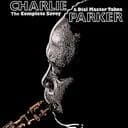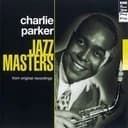The B♭ Bebop Dominant Scale in Jazz
The B♭ bebop dominant scale follows the interval formula of 2-2-1-2-2-1-1-1 semitones, producing the notes B♭, C, D, E♭, F, G, A♭, and A. The chromatic passing tone (A natural) creates an eight-note structure ensuring chord tones (B♭, D, F, A♭) fall on strong beats during eighth-note improvisation. This rhythmic alignment, pioneered by bebop masters, revolutionized jazz improvisation by maintaining harmonic emphasis while playing rapid scalar passages—a technique essential to authentic bebop language.
Application in Jazz Standards and Blues
The B♭ bebop dominant scale serves as a primary improvisational tool over B♭7 (B♭ dominant seventh) chords, appearing frequently in jazz standards, blues progressions, and bebop compositions. Tunes like "Oleo," "Cherokee," and "Confirmation" feature B♭7 dominant harmony where this scale creates authentic bebop lines. In ii-V-I progressions resolving to E♭ major (Cm7-B♭7-E♭maj7), the B♭ bebop dominant scale provides smooth voice leading and characteristic chromaticism that defines the bebop style.
Piano Practice and Technical Development
For effective piano practice of the B♭ bebop dominant scale, use consistent fingering: right hand ascending from B♭: 2(B♭)-1(C)-2(D)- 3(E♭)-4(F)-1(G)-2(A♭)-3(A)-4(B♭). Set your metronome to 60-80 BPM and practice in strict eighth notes, emphasizing chord tones (B♭, D, F, A♭) on downbeats. This trains your ear to hear harmonic structure within scalar movement. Progress to various rhythmic groupings and practice through different octaves.
Harmonic Applications and Progressions
In the key of E♭ major, the progression Cm7-B♭7-E♭maj7 provides perfect context for the B♭ bebop dominant scale: play C Dorian over Cm7, switch to B♭ bebop dominant over B♭7, and resolve to E♭ major. The scale also excels in B♭ blues contexts and turnaround progressions, making it indispensable for jazz improvisation.
Relationships to Other B♭ Scales
The B♭ bebop dominant scale shares its foundation with the B♭ Mixolydian mode, differing only by the A natural chromatic passing tone. The B♭ bebop major scale serves as the parallel bebop scale. Jazz pianists develop fluency with multiple B♭ dominant scale options—bebop dominant, Mixolydian, altered— learning to choose based on harmonic context and desired effect.





